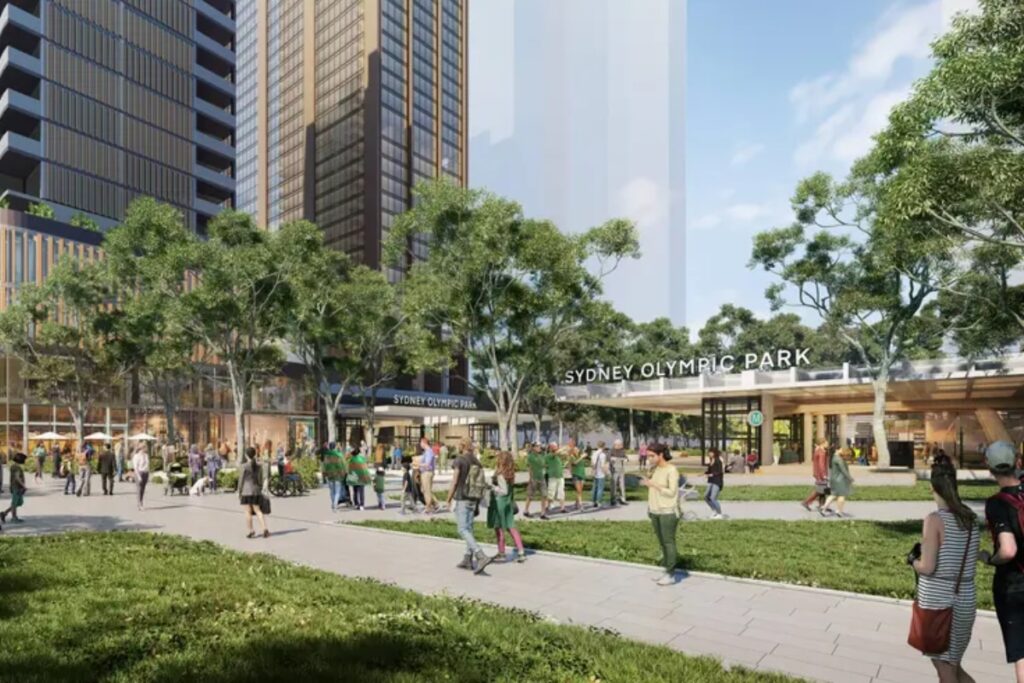
Sydney Metro has announced the shortlist of development partners for an ambitious integrated station and precinct project at Sydney Olympic Park. The project, which encompasses the design and construction of a new metro station, its surrounding precinct, and two adjacent buildings, is poised to transform the area into a bustling hub of activity.
The shortlisted consortia vying for the contract, expected to be awarded by mid-2026, include:
- FCC Construction Australia Pty Ltd and Ecove Group Pty Ltd (FCC and Ecove)
- Gamuda Engineering Pty Ltd, Gamuda (Australia) Pty Ltd, and MTR Corporation (Australia) Pty Ltd (Gamuda and MTR)
- John Holland Pty Ltd and Freecity Group Holdings Pty Ltd (John Holland and Freecity)
Strategic Importance of the Sydney Olympic Park Station
Sydney Metro describes the new Sydney Olympic Park metro station as a “strategically important” addition to the city’s transit network. The station is expected to support the transit of over 10 million people annually, connecting seamlessly with the planned Parramatta Light Rail, the T7 Olympic Park line, and various bus and active transport routes.
A spokesperson for Sydney Metro emphasized the project’s potential impact:
“The well-connected development will reinvigorate Sydney Olympic Park and create a lively new destination where people can live, work, and play, while various new dining and retail experiences will significantly enhance Sydney’s night-time economy.”
Enhancing Accessibility and Capacity
The new station will feature platforms on both sides of the train, a design choice aimed at facilitating the movement of large crowds during major events. This feature is expected to enhance the station’s capacity, ensuring efficient boarding and disembarking processes for passengers.
Moreover, the station promises fast and frequent metro services, including a 15-minute journey to Hunter Street in the Sydney CBD, making Sydney Olympic Park more accessible than ever before.
Residential Development and Economic Impact
The integrated station and precinct development will also contribute significantly to local housing supply, with plans for more than 300 new residential dwellings. This aligns with the New South Wales Government’s priorities to increase housing availability in the region.
In a separate initiative, planning is underway to amend development plans to accommodate around 190 additional residential dwellings directly above the metro station, further bolstering the area’s residential capacity.
Expert Opinions and Future Prospects
Urban development experts have lauded the project as a forward-thinking initiative that will not only enhance transportation efficiency but also stimulate economic growth. According to Dr. Jane Smith, an urban planning specialist at the University of Sydney,
“The integration of residential, commercial, and transport infrastructure at Sydney Olympic Park is a model for sustainable urban development.”
As the project progresses, stakeholders and local residents alike are keenly watching how the development will reshape the landscape of Sydney Olympic Park. The anticipated improvements in connectivity and infrastructure are expected to attract new businesses and residents, further cementing Sydney’s reputation as a global city.
With the contract award set for mid-2026, the coming years will be crucial in determining the project’s success and its long-term benefits for Sydney’s urban fabric.






